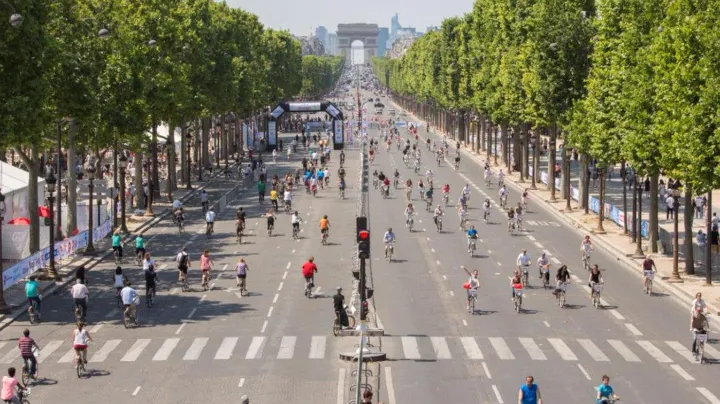If you haven’t read my blog in a while (or ever), the last few posts explain my decision to work within the literary genre of Utopian writing. Utopian visions have always precipitated new paradigms in urban planning. It is unimaginable that such a thing as a purpose-built bicycle city could even come into existence without some fantasy about an unattainable no-place/happy place called Velotopia. While it would only ever be a touchstone notion, we will never know what we are working toward if we never properly nut out its details.

So far, I’ve described it as a 15km diameter city with all encumbrances to bicycle transport cleared out of the way. The main premise underpinning this model is that a mum with her bub in a bakfiets, cruising at 15kph, can reach the center from the outskirts of a 15km wide city in 30 minutes—time she could easily lose just faffing around parking lots or train stations in a city of the kind that we know already. She doesn’t need machines. She needs machines out of her way.
Like a cow in New Delhi, someone sailing a yacht on a harbor, or an ignorant driver in about any car-centric city, she can remain blissfully unaware of the design and regulatory efforts laid down by others to ensure her beeline journey by bike. Yet in Velotopia, some machines have motors that move: ambulances to rush to her aid, fire engines to save her apartment, buses for when she can’t cycle, cement mixers and cranes to provide new buildings for her to occupy, garbage trucks removing her rubbish, and trucks to stock the big supermarket she regularly heads to for the lowest prices on groceries. What design strokes allowed her to remain oblivious to all these machines that could easily crush her? You probably imagine a parallel network of service.

Most of us have some experience with heterotopias that create the illusion of a non-vehicular environment. Main Street USA in Disneyland is an extreme example. Most visitors do, however, realize that a back-of-house network of utility corridors accommodates all vehicles collecting the rubbish and stocking the shops to create the illusion of bliss for park visitors. (Here’s a video)
Ironically, it can be those among us who would be the most vociferous in decrying the fakery of Disneyland. They can also be the most prone to self-deception when we place ourselves in another kind of heterotopic space, that of the cycleway network.

Canonical examples are new towns like Houten in the Netherlands and Milton Keynes in the U.K, where the provision of cycleways is so thorough it can be hard to discern whether houses front cycleways and back onto roadways or vice versa.
Post-industrial cities are accruing similar networks as their docklands are transformed into waterfront promenades, and their rail corridors are turned into greenways. In Portland, Oregon, alternate streets are being traffic calmed and rebadged as “neighborhood greenways” as another way of creating a bike-centric layer in a car-centric city.
Have we transcended our dependence on motorized vehicles, and therefore stopped emitting carbon and stopped supporting conflicts in the gulf region when we reorient our lives to networks like these? Or are we as dependent as any visitor to Disneyland upon movements of machines using networks of roads we have conveniently cropped from our view?
The problem with ancillary space in buildings and cities is how quickly it fills. There were questions about the apparent generosity of service spaces in Louis Kahn’s Richards Medical Building at the time it was built. By the time Kahn got his next laboratory to design for Jonas Salk, the hollow pipe towers and interstitial ceiling spaces in the Richards Medical Building were so choked with pipes—that the users had kept adding without taking old pipes away—that Kahn slotted whole levels of service pipe space between every level of lab space at the Salk Institute. These are now completely choked too.

Just as we assume that goods manufactured for us elsewhere generate more waste and pollution than items we make for ourselves, it is reasonable to suspect inefficiencies on the grey side of the fence when we choose to live on the green side. A person living a bicycling lifestyle, oriented to a network of greenways, can easily fool themselves into thinking they are generating fewer vehicular movements than they were before they gave up their car when, in all likelihood, they are now having more things delivered and more things taken away by machines. Likely, some of the fortunes they save by not owning a car are being spent on services that generate vehicular movements, which they, as consumers, cannot track.
